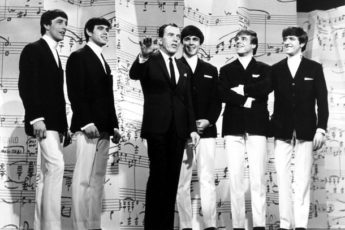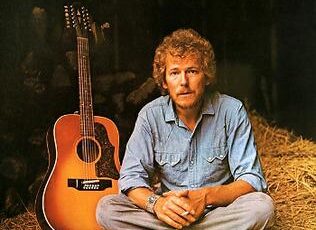
Until recently I think the strangest place I found music was from a toilet. When the seat was dropped on the one in the hall bathroom of my house it would rattle just like the percussive intro of Santana’s ‘Smooth’ – two quick beats, a tiny pause before a third hit, and then a succession of 4-5 rapid taps. Once you’d heard it, it was all but impossible not to sing out the opening of Carlos Santana’s unmistakable guitar line that commences the song (and resurrected his career). My son Max used to invite neighborhood kids over to hear it; I would’ve loved to have seen the looks on their moms’ faces when they said they were going over to their friend’s house to listen to a falling toilet seat.
Then recently an old refrigerator gave out. I had few needs as far as features for a replacement, but I do like having a built-in water/ice dispenser, and our shiny, new GE Café has one that works great. Only when it’s dispensing water it does give off a little humming sound, which after about 3-4 seconds rises to a slightly higher pitch and becomes a bit buzzier. It reminded me of something, but the first few times I heard it I couldn’t quite place what it was. Then one day, coming in right behind the buzzing, a John Lennon riff went off in my head. And I realized, my new refrigerator was playing ‘I Feel Fine.’
The early Beatles classic opens with a prominent buzzing/humming sound of its own, more specifically, with the first-ever use of feedback in a rock recording. “John had a semi-acoustic Gibson guitar, it had a pickup on it so it could be amplified,” described Paul McCartney. “We were just about to walk away to listen to a take when John leaned his guitar against an amp – I can still see him doing it! – and it went “Nnnnnnwahhhhh! We said ‘What’s that, voodoo?’ George Martin replied, ‘No, it’s feedback,’ and we said ‘Wow, it’s a great sound, can we have that on the record?’” It was entirely an accident, a found sound. Though artists like The Kinks and The Who had already used feedback live, Lennon remained quite proud of the sonic serendipity that resulted in the Beatles being the first group to deliberately put it on vinyl (years before Hendrix, for example1). In one of his last interviews he said: “I defy anybody to find a (earlier) record – unless it’s some old blues record in 1922 – that uses feedback that way.”
In addition to appropriating some newfound electronic magic, the song itself borrowed John’s main riff from the 1961 Bobby Parker tune ‘Watch Your Step’2 (a standard of live Beatles shows in 1961-1962), and Ringo’s Latin-influenced drumbeat from Ray Charles’s ‘What’d I Say.’ And in this preposterous accompanying video – George singing into a punching bag, Ringo frolicking on 30 seconds late to join in, for some reason, on a stationary bike – the Beatles mostly seem to be borrowing from the Marx Brothers. Popular music has always borrowed its influences and sounds liberally, and, at times, from unlikely sources – one era, one style, one technique reverberating into another. Generally those abstractions are connected in studios or on stages. Only in far rarer cases can they be traced to bathrooms and kitchens.
1In the Beatles Anthology film, when Paul, George and Ringo are discussing the feedback at the beginning of ‘I Feel Fine,’ Harrison jokingly claims that “we invented Jimi Hendrix”
2the same lick was later lifted again for the Allman Brothers jam ‘One Way Out’






Rob MacMahon
January 23, 2021 12:14 pmBill: I nvr knew this story so always very cool to learn a new Beatles anecdote. And this tune is another great one from the Fabs! Keep up the good work! Rob Mac
PS: Jeez, I wonder what tune your elec toothbrush will conjure?
Bill G.
January 23, 2021 12:42 pmHa! I’m hoping for inspiration from my microwave next..